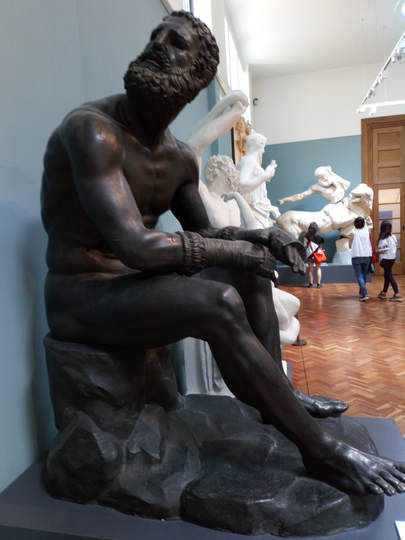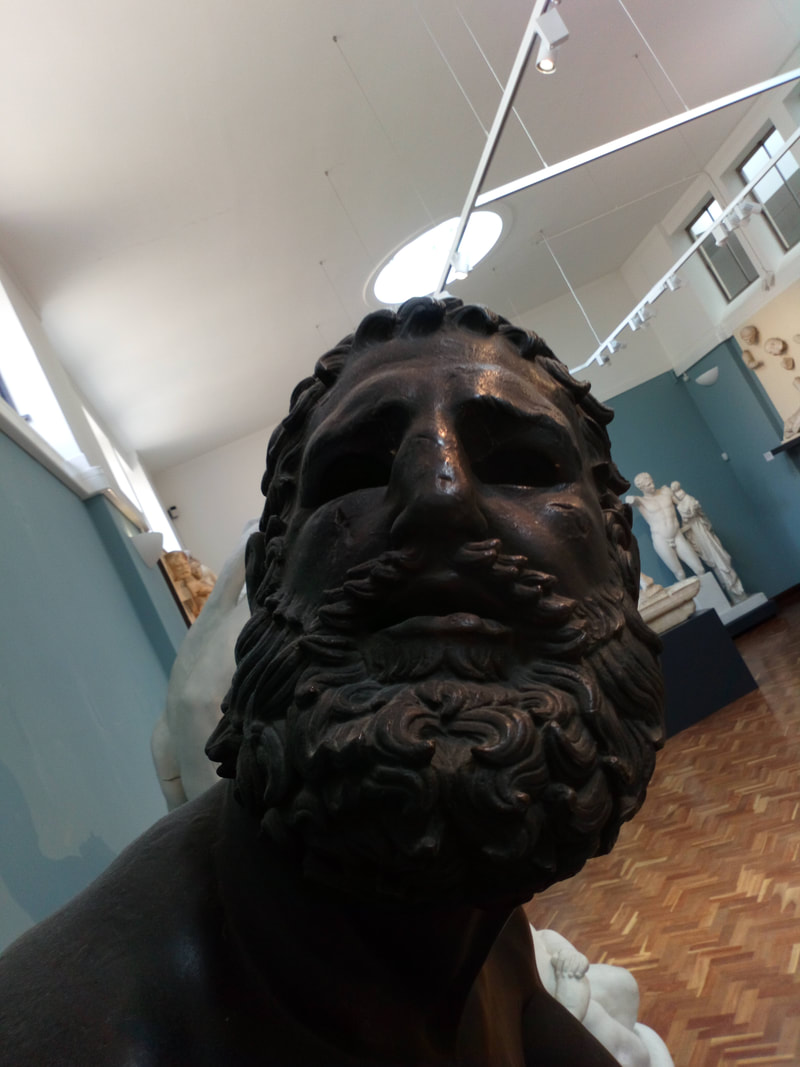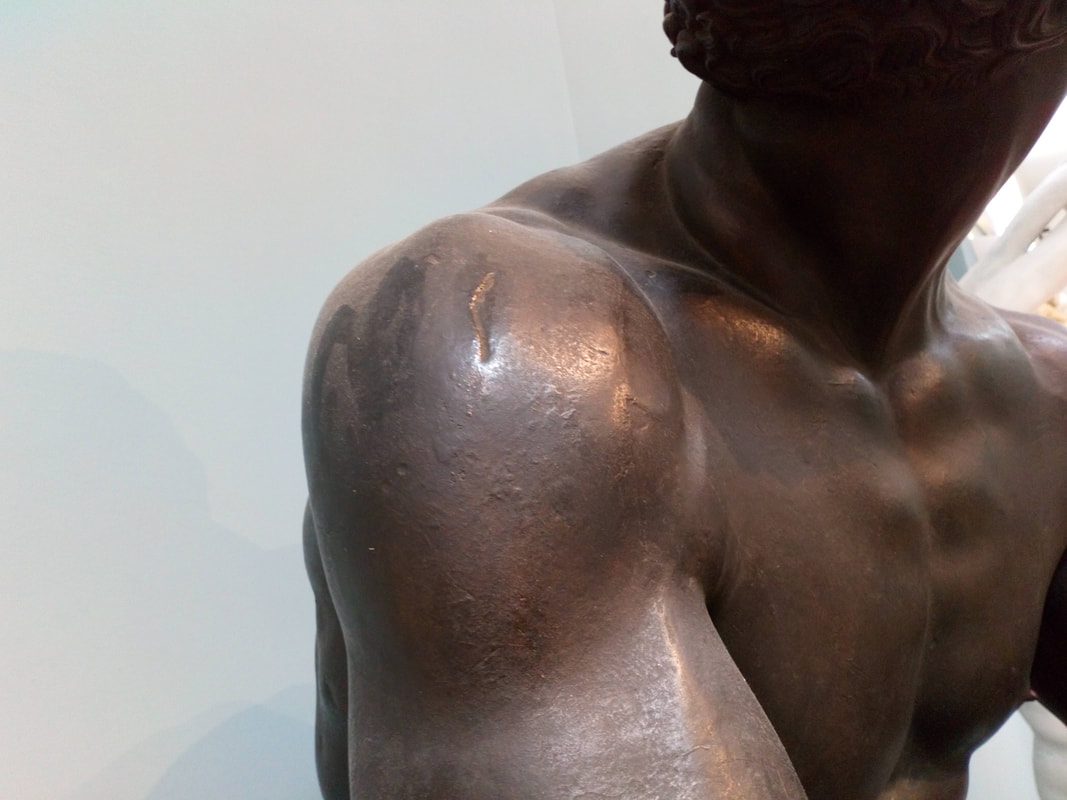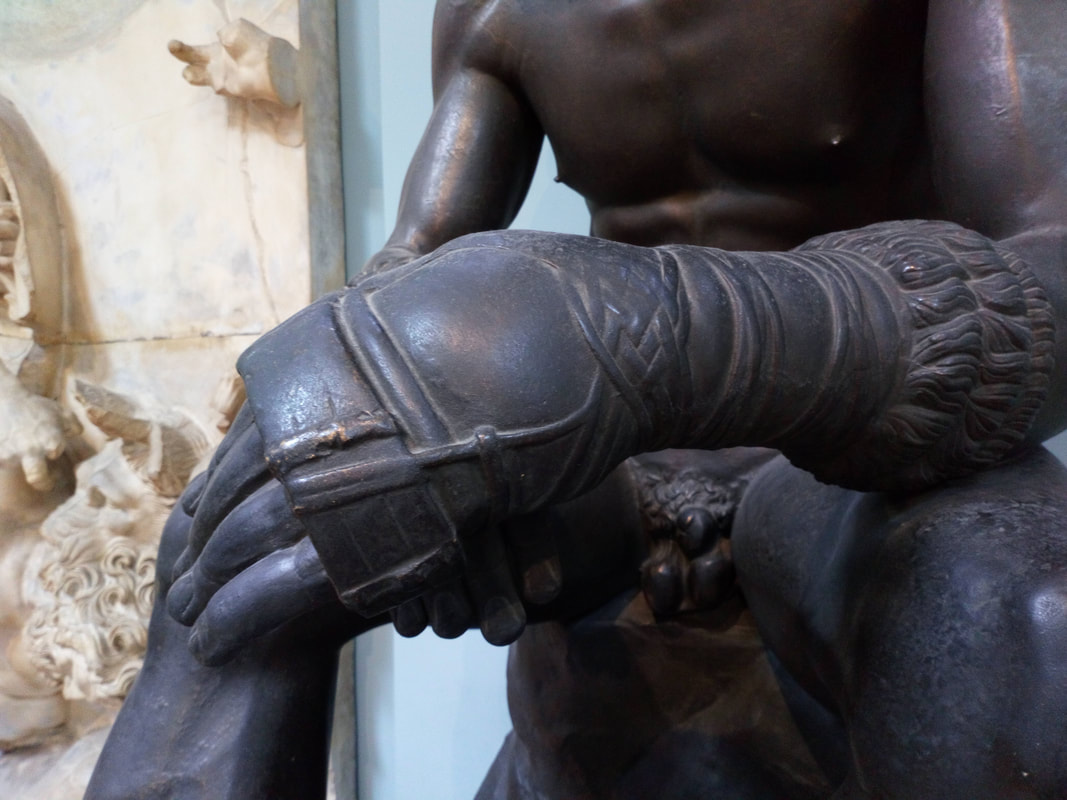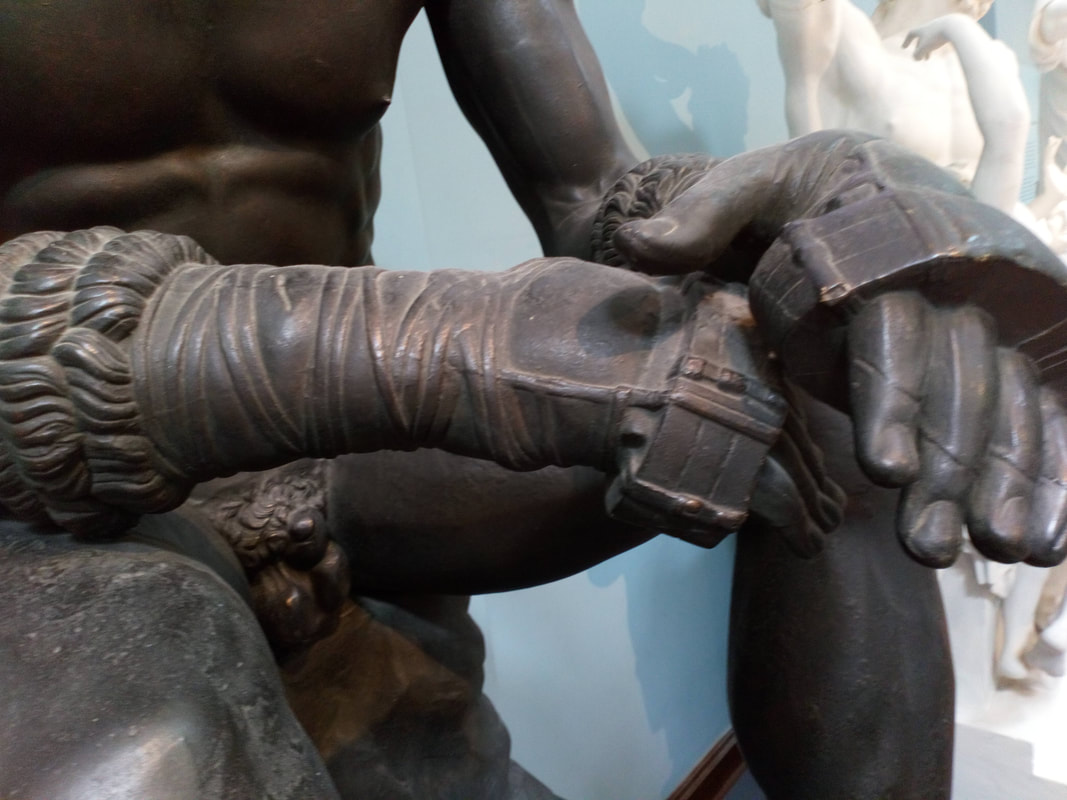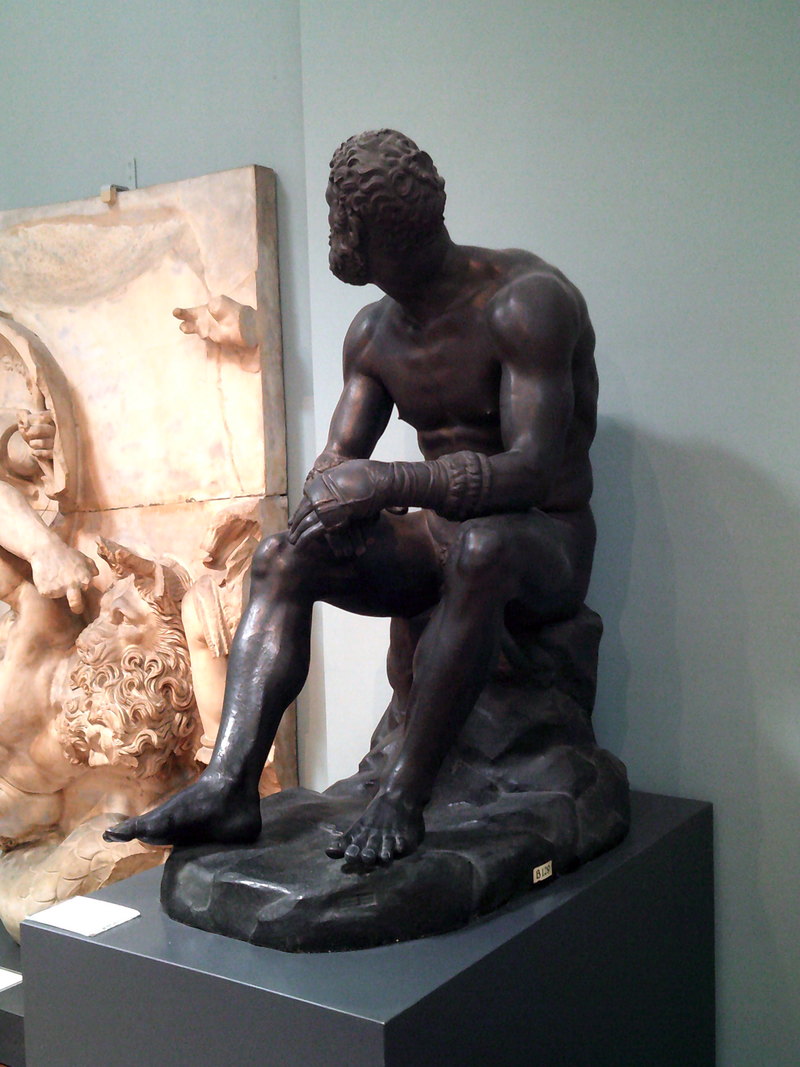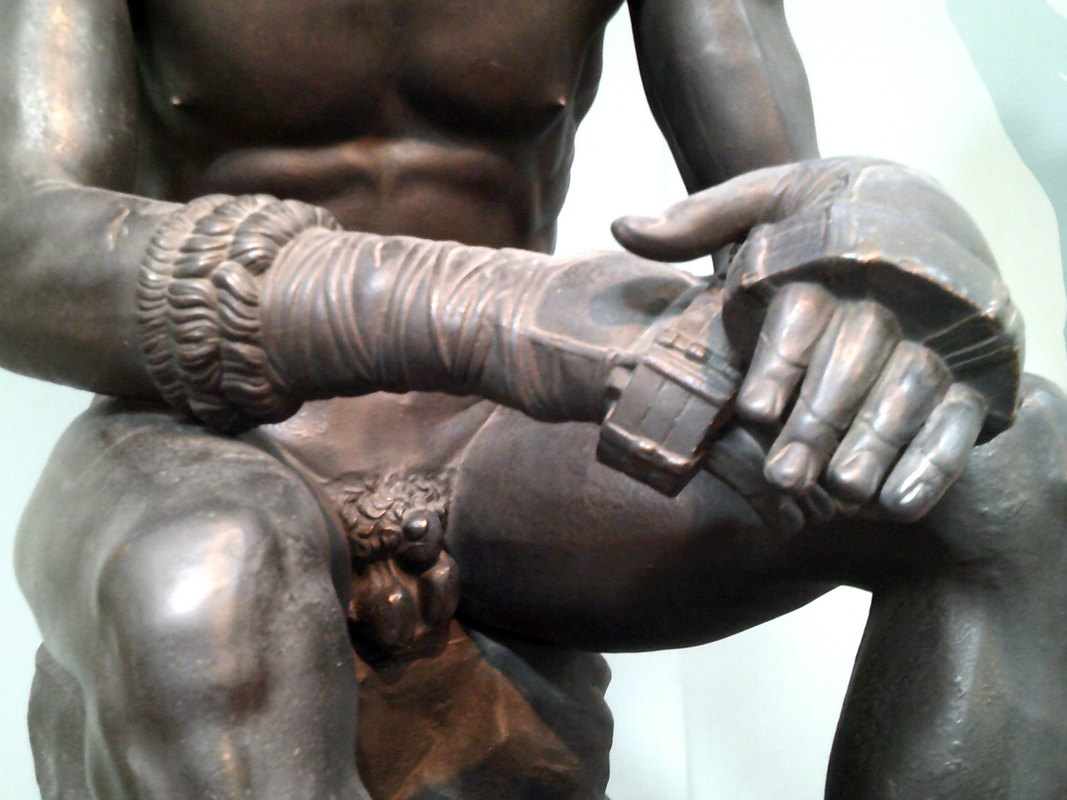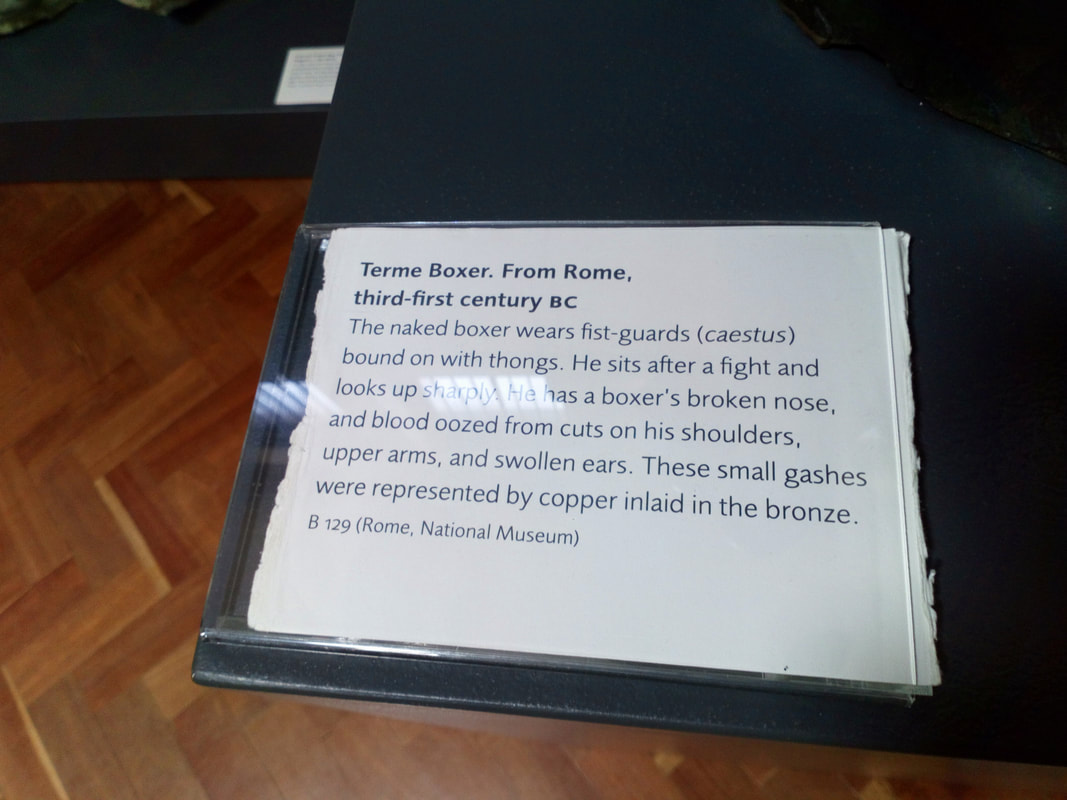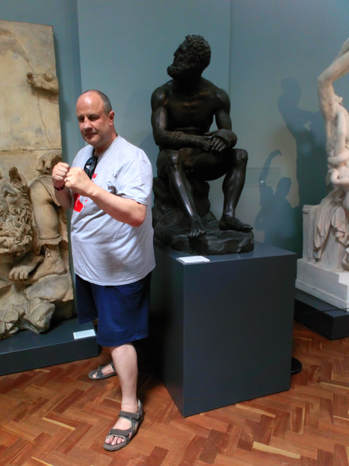The Greek Boxer at Rest (3rd-1st Century BCE)We visited the Ashmolean Museum (Oxford) on Saturday the 23rd of June 2018. In the Greek Antiquities section, we discovered this remarkable copper and bronze statue of a naked boxer replete with ‘fist guards’ (caestus). He has relatively deep cuts (about two inches long) on his shoulders and arms, swollen ears, cut lips, broken teeth, a broken (‘swollen’ and cut) nose, with evidence of cuts around his cheek bones. There may also be evidence of scarring around his eyes and upon his forehead. This is all indicative of receiving full-powered punches to the upper body and head, delivered by hands wrapped in fingerless gloves that are constructed out of various thicknesses of leather. He appears to be sat on a rock.
It is assumed that this is a very detailed statue of a once living Greek boxer, that is known as the ‘Boxer of Terme’, or the ‘Boxer of Quirinal’, denoting the area of modern Italy this statue was discovered in 1885. It is thought that after the ascendency of Rome, this statue was brought from Greece to adorn the Baths of Constantine. Other than the gloves he wears, this man fights naked, and here he is either between rounds, or between fights. Having examined his legs, I could find no evidence of wounds, suggesting that blows were limited to above the waste (although it is generally agreed that the genitals appear ‘scarred’, whether by accident or on purpose is difficult to tell). Having seen photographs of his back, I could find no evidence of wounds, suggesting that blows were limited to the upper-front area of the body. The statue is soldered together from eight separate pieces of Bronze to such a high degree of artistry, that no joins can be discerned with the naked eye. The wounds were inlayed with copper to give a dramatic contrast from the rest of his skin. He carried the curly hair and beard typical of ancient Greek art, and is physically very fit. Despite his injuries, he has obviously undergone extensive training to survive participation in this ‘sport’ that obviously required fighting-on even after terrible gashes had been opened-up, and blood seeping from many wounds. This is not modern boxing with its rules of safety and medical precautions.
It has been remarked that the persona of this man (as conveyed by the original artist), despite the brutality of the sport he participates within and must endure, appears both calm and gentle. His body is tough, strong and externally marked from the endless blows he has received, but his mind appears free from anger, and even happy in the sense of someone who has mastered their station in life, and knows how to survive. His hands are obviously efficient anatomical weapons, and yet when observed at rest, they appear receptive and kind, as waiting to help at the earliest opportunity. Was this man a slave of the Greek State captured in war and made to fight as entertainment? Or, was he a Greek citizen who had mastered not only the physical art of pugilism, but also the philosophy underlying it? Whatever the case, we honour this man as a fellow martial artist.
©opyright: Adrian Chan-Wyles (ShiDaDao) 2018.
|
